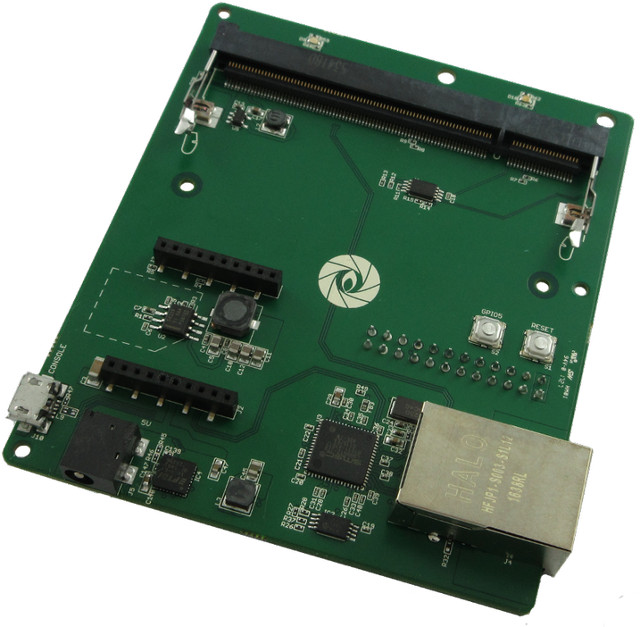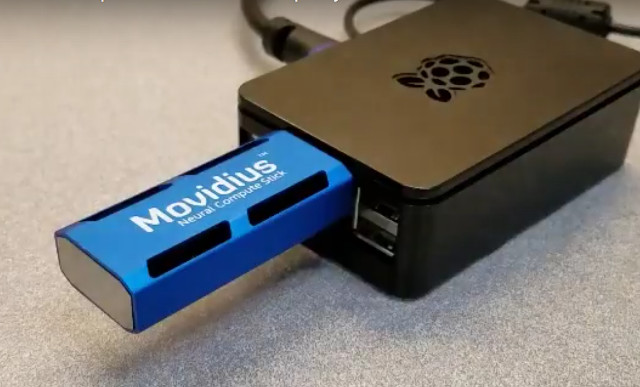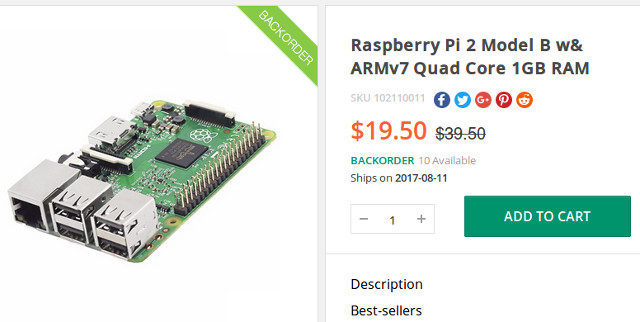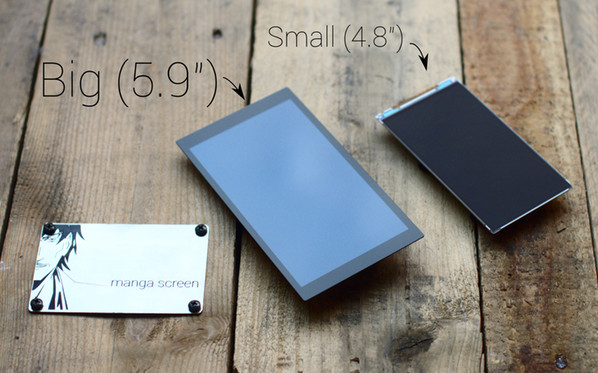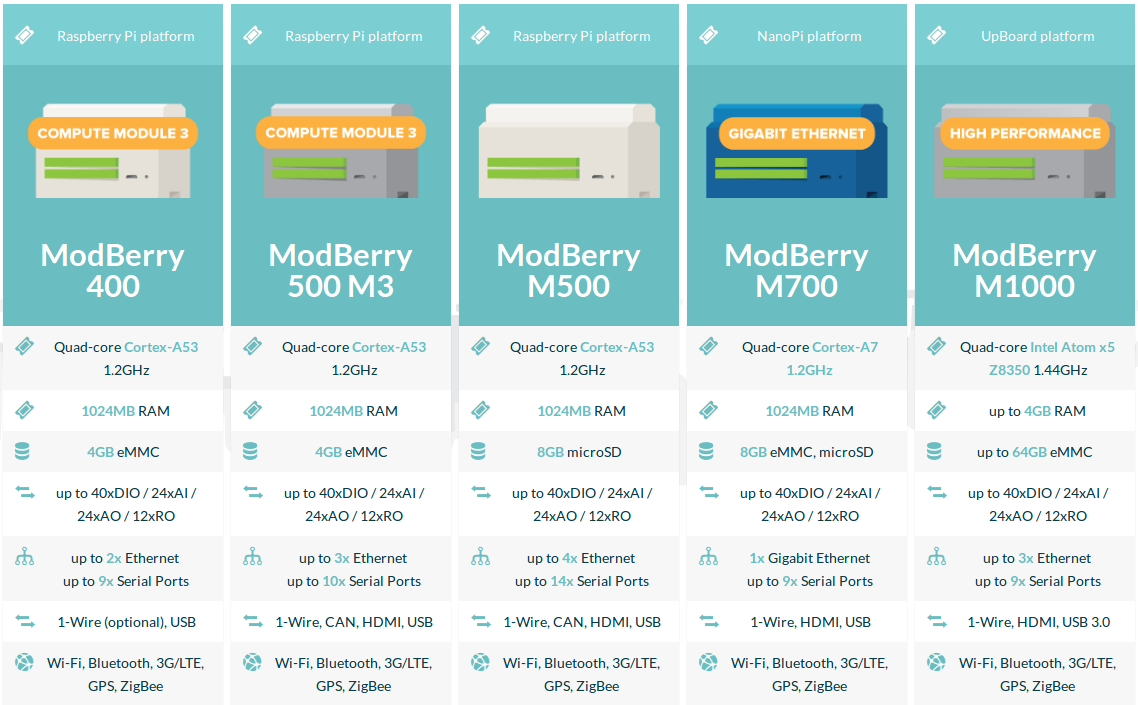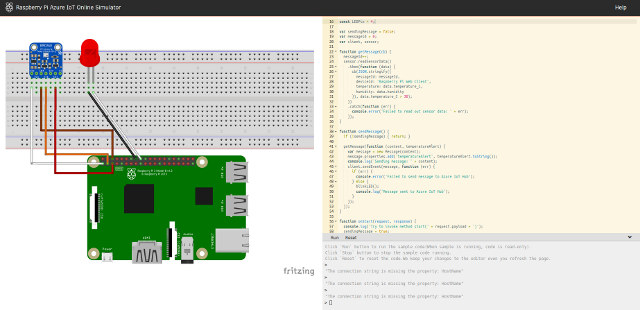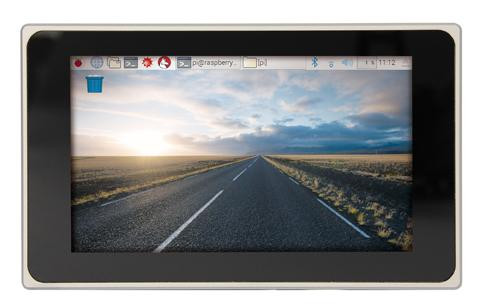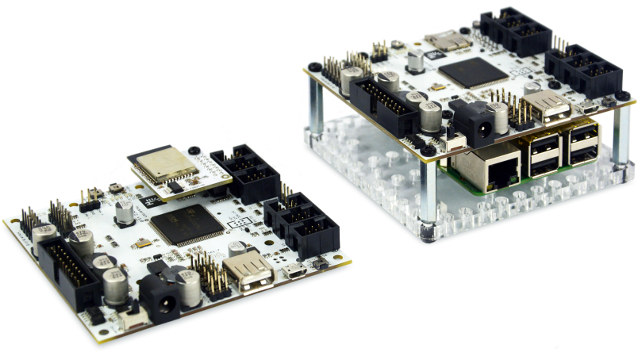Gumstix has designed Pi Conduit Gateway baseboard for both the Raspberry Pi Compute Module and RisingRF RHF0M301 LoRa gateway module, in order to create a Linux based LoRa gateway that can optionally support LTE or other cellular connectivity via NimbeLink Skywire cellular modem. Conduit Pi LoRa Gateway board specifications: 200-pin SO-DIMM connector for Raspberry Pi Compute Module / Raspberry Pi 3 Compute Module (CM3 / CM3L) Headers for RisingRF RHF0M301 LoRa Module NimbeLink Skywire 2G/3G/4G cellular modem connector Low profile 10/100M Ethernet jack (implemented via USB 2.0) USB – 1x micro USB port for debugging via an FTDI USB to TTL chip Misc – User (GPIO5) and reset buttons Power Supply – 5V via power barrel The board was designed using Geppetto, which means you should be able to customize it to your needs by modifying it the original design in a web browser, and order your brand new custom […]
Intel’s Movidius Neural Compute Stick Supports Raspberry Pi 3 Board
Last month, Intel introduced Movidius Neural Computer Stick to accelerate applications such as object recognition, and do so offline, i.e. without the cloud, and at low power. While there was not that much information available at the time, the minimal requirements for the host machine were that it had to be a x86_64 computer running Ubuntu 16.04, and come with at least 1GB RAM, and 4GB storage. So I understood the stick would only work attached with 64-bit Intel or AMD processors, and ARM development boards would not be an option. But today, I’ve found that Movidius had uploaded a new video showing a Python based object recognition demo with the Neural Compute Stick connected to the the Raspberry Pi 3 board. You just need to add a USB camera, copy ncapi directory from the SDK installed on your Ubuntu 16.04 development machine to the Debian Jessie installed on RPi 3 […]
Buy Raspberry Pi 2 Board for Just $19.50 (Promo)
With the launch of Raspberry Pi 3 last year, there’s been much less interest for the Raspberry Pi 2 board, especially there has not been any official price cut. But Seeed Studio has an interesting promotion right now where the company sells Raspberry Pi 2 board for just $19.50, or $20 off the normal price on their website. That price does not include shipping, but this can apparently be combined with TENOFFSHIP coupon to bring the total price with shipping to Germany to $21.66. If the same laws are still in place, it’s below the 22 Euros limit in Europe meaning you won’t need to pay for VAT or custom duties on the board. You need to use the coupon before July 31, midnight (GMT+8), so there are only a few hours left. The main downside is that only 10 are available on backorder with shipping scheduled for August 11. […]
Manga Screen 2 is Smartphone Touchscreen Display with USB and HDMI Ports for Makers (Crowdfunding)
Most touchscreen displays aimed to be connected to a development board work through a display interface such as MIPI DSI or LCD RGB (and USB or I2C for touch support), and come with somewhat low resolution such as 800×480 which can be suitable for HMI applications. They also often don’t work with all boards due to the different interfaces used, and there’s no way to easily connect such small display to your computer. Taking those limitations into account, and since most boards and computers come with HDMI and USB ports, Elias Bakken and his team have added HDMI and USB ports to two smartphone displays, and Manga Screen 2 was born. The two displays – made by Sharp – have the following hardware specifications: Big (5.9”) Small (4.8”) Resolution 1920×1080 1280×720 FPS (max) 60 57 Color mode 24-bit PPI 376.2 307.9 Brightness 400 cd/m2 500 cd/m2 Contrast ratio 1000:1 800:1 […]
ModBerry Industrial Automation Controllers Leverage Raspberry Pi, FriendlyELEC, and AAEON Boards and Modules
TECHBASE’s ModBerry Linux based industrial controllers have been around since 2014 with their first model being ModBerry 500 powered by a Raspberry Pi compute module. Over the years, the company has kept adding new ModBerry controllers with now an interesting choice of Raspberry Pi 3 board or compute module, FriendlyELEC’s NanoPi M1 Plus board, or Intel Atom x5 based AAEON’s UP board. All programmable automation controllers (PAC) runs Linux 4.0 or greater, with Debian or Ubuntu Core rootfs including ready tools and pre-compiled packs including C/C++, JAVA, SQL, PHP, SSH, and VPN support. The firmware is upgradeable over the air, and the controllers can run the company’s iMod control software and interface with iModCloud cloud computing service for telemetry, remote control and data sharing. Typical uses include C-L-V functions with conversion to collect and transmit data over communication interfaces, logging via iModCloud or a SCADA, and visualization via a web […]
Microsoft Releases Raspberry Pi 3 Web Simulator Working with Azure IoT Cloud
If you were already following this blog when the first Raspberry Pi launched, you may have tried to emulate a Raspberry Pi and run Fedora in QEMU, as getting a board was a challenge at that time. Microsoft has launched its own Raspberry Pi (3) simulator running in web browsers, connecting to virtual sensors and components using Fritzing, and interfacing with the company’s Azure IoT cloud service. The preview version of the simulator does not allow you customize components on the breadboard, something you’ll be able to do in the release version, so we are stuck with a BMP280 sensor and red LED in the assembly window. on the left. On the top right, we’ve got sample source code written using Node.js to read temperature data from the sensor, push it to an Azure IoT Hub, and blink the LED in the coding area, and finally the integrated console window […]
MASS RPI 07 is a 7″ Industrial Touch Panel PC Based on Raspberry Pi 3
MASS GmbH has launched RPI 07, a touch panel PC with a 7″ 800×480 display powered by a Raspberry Pi 3 board, and designed for industrial applications thanks to a 12V to 24V variable power input, aluminum housing, DIO with optocouplers, an optional CAN Bus and more. MASS RPI-07 specifications: SoC – Broadcom BCM2837 quad core ARM Cortex A53 processor @ up to 1.2 GHz with VideoCore IV GPU System Memory – 1GB LPDDR2 Storage – 16GB micro SD SDHC Class 10 Display – 7″ WVGA 800×480 touchscreen display with 250cd/m² brightness, 500:1 contrast, 10-point touch Connectivity – 1x 10/100Mbps Ethernet, 802.11 b/g/n WiFi and Bluetooth 4.2 LE USB – 4x USB 2.0 Optional Interfaces – Real-time clock (RTC), DIO with optocouplers, I²C, CAN, RS232 Power supply – 12 to 24V DC (15W max) via 2-pin terminal with on/off switch Dimensions – 200 x 118 x 48mm (powder coated metal […]
Husarion CORE2 STM32 Board for Robotics Projects Works with ESP32, Raspberry Pi 3, or ASUS Tinkerboard
Husarion CORE2 is a board designed to make robotics projects simpler and faster to complete with pre-configured software and online management. Projects can start using LEGOs, before moving to 3D printed or laser-cut version of the mechanical parts without having to spend too much time on the electronics and software part of the project. Two versions of the board are available: CORE2 combining STM32 MCU with ESP32 WiFI & Bluetooth module, and CORE2-ROS with STM32 instead coupled to a Raspberry Pi 3 or ASUS Tinkerboard running ROS (Robot Operating System). Both solutions share most of the same specifications: MCU -STMicro STM32F4 ARM CORTEX-M4 MCU @ 168 MHz with 192 kB RAM, 1 MB Flash External Storage – 1x micro SD slot USB – 1x USB 2.0 host port with 1A charging capability; 1x micro USB port for debugging and programming via FTDI chip Expansion Headers hRPi expansion header for CORE2-ROS […]


